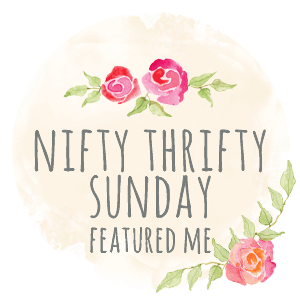In last Friday's post I mentioned I'd be celebrating my second Christmas on January 7, the Eastern Orthodox Christmas. Although it's the same holiday as Christmas celebrated on December 25, the Eastern Orthodox tradition follows the Julian calendar, recognized long before the Gregorian calendar our days are based on today. If you are interested in finding out why we as a society abandoned the Julian calendar for the Gregorian calendar, click here.
My whole life I have been lucky enough to celebrate both Christmas days. As a child you can imagine what a thrill it was for me! What is interesting is that the Christmas I celebrate on January 7 is more subdued and simple when compared to the grandeur of decked halls, spiked eggnog, and shimmering lights on a tree on December 25. January 7 is bursting with tradition and I wanted to share some of those here with you.
Christmas Eve is referred to as Badnje Vece. During the day, we do not consume any meat, egg, or dairy products. This fast is not broken until Christmas morning. We do have a meal of fish and potatoes before heading out to the church service. At the church an oak tree is sparsely decorated with oranges, apples, nuts, and paper streamers. This is the badnjak, or Yule log, and it is burned after the church service. Luckily, the children are able to pick the fruit and nuts off the tree prior to it being lit aflame. Each person is able to bring home with them a small branch from the oak tree for their own home to decorate. Also, we bring home a small handful of hay that has been blessed by the church. The hay, of course, signifies Christ's humble birth. My son lights a candle in memory of loved ones that have departed and it's always a good time to remember those people.
On Christmas Day we say these words to each person we greet, "Hristos se Rodi! (Christ is born!" And the other person responds with, "Voistinu se Rodi! (Indeed He is born!)" I always try to greet the person first since the first phrase is easier to say.
The morning breakfast consists of a corn meal porridge. The tradition is to look into the porridge and try to see your reflection. The porridge is typically sheathed with butter so seeing your reflection is pretty much a given. With the mirror of butter atop the porridge I wouldn't think the American Heart Association would approve, but it's tradition!
The next part of the meal is the round-loafed bread. Hidden inside is a coin. Everybody gathers around the bread and grabs hold of a portion of it then pulls their piece in hopes their portion has the coin. The person lucky enough to have found the coin is to have luck all year!
Another fun tradition is walnut bowling. You pile the walnuts high, stand back aways, then bowl your walnut into the walnut stack, hoping to get a strike. My dad and son love playing this game together.
I hope you enjoyed a glimmer into my Christmas traditions for January 7. Does anyone else out there celebrate Christmas on the same day?
Subscribe to:
Post Comments (Atom)





























1 comment:
Thanks so much for sharing your second Christmas. When I was growing up some of our Ukrainian neighbours celebrated Orthodox Christmas, but we didn't really know too much about it.
Post a Comment